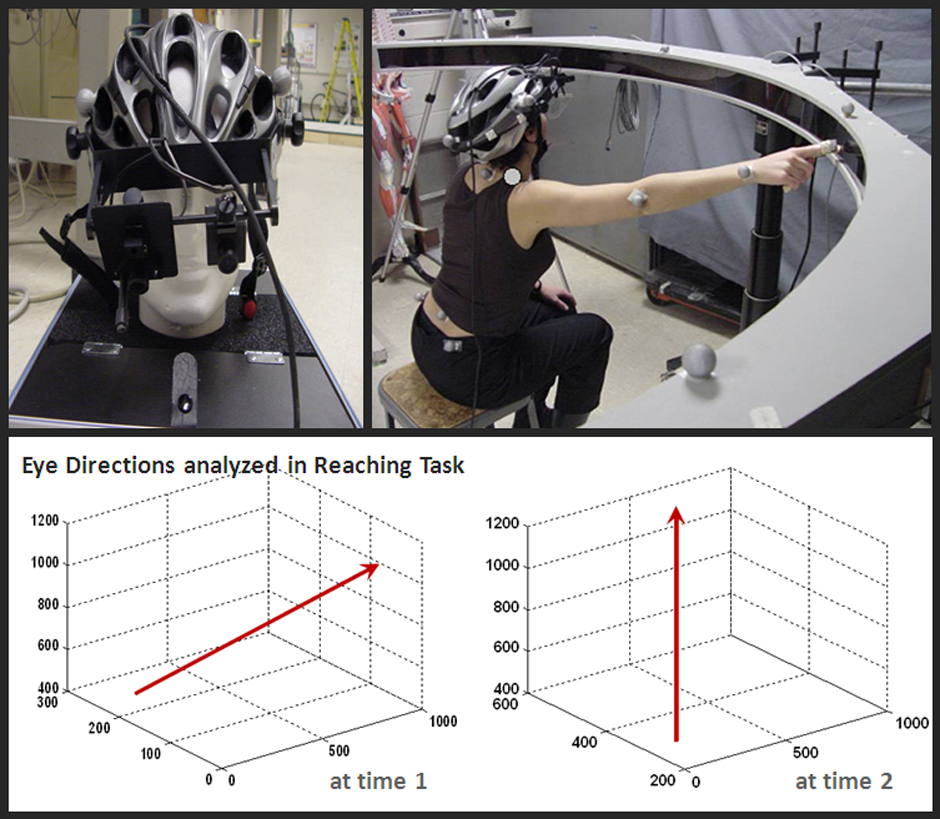Vision is the process of understanding what is seen by the eyes.
Vision involves fixation and eye movement abilities, accommodation, convergence, and the control of eye-body coordination.
Most body movements require visual input to be carried out effectively.
Body-Eye coordination is the ability of the vision system to coordinate the information received through the eyes to control, guide, and direct the body movements.
Body-Eye coordination is crucial for efficient movement and the safety of such tasks as manual work and driving.
Head movements contribute to gaze displacements by 1) expanding the field of view by overcoming the limited range of motion (ROM) of the eyes and 2) reducing the error associated with encoding target position with eye movements alone. In this study, for the analysis of between visual and manual functions, the coordination of multiple subsystems and phases of visually guided movements were designed. The objective of this study was to model the coordination of multiple subsystems and phases of visually guided movements.
A series of experiments of seated reach movements and tracked the direction of eye movement under the reaching task from different human subjects was performed in order to investigate unconstrained three-dimensional visually guided movements.
This study can provide information about the effect of head orientation on the accuracy and kinematics of hand pointing movements.
Eye-Body Coordination
